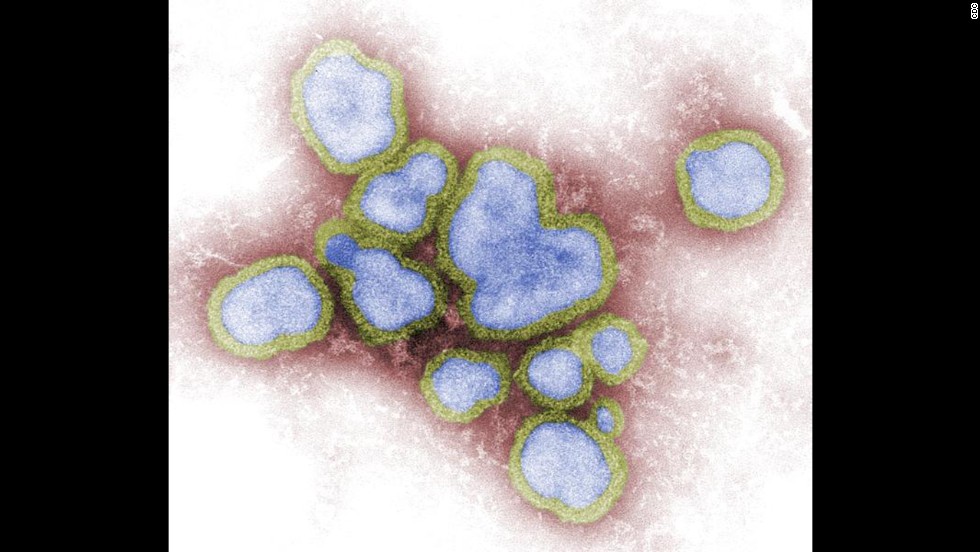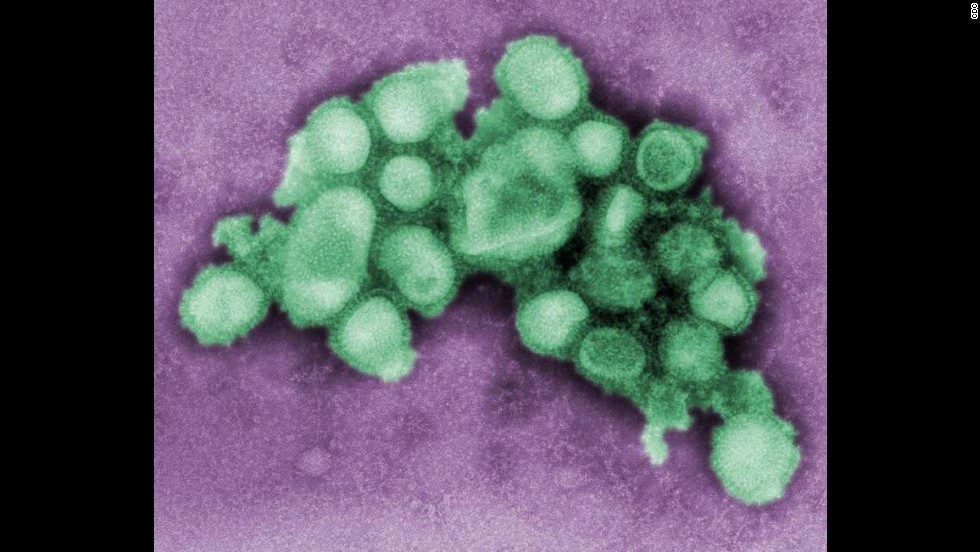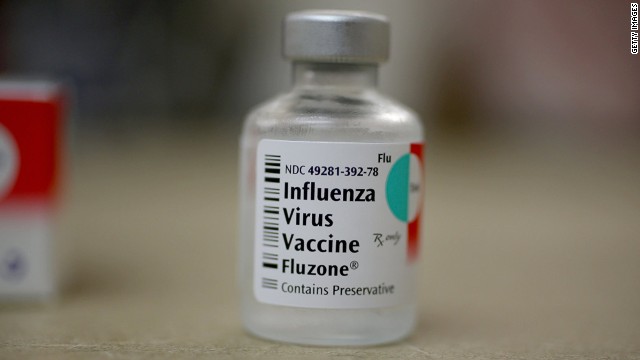Story highlights
- People born before and after 1968 have different risks for certain flu infections, a study suggests
- "There's actually this kind of blatant protection that we're all carrying around," one expert says
- Though the new finding is striking, experts still recommend getting your flu shot
(CNN)Flu season has arrived, and many people are bracing themselves for the sneezes, sniffles and sick days that lurk around the corner.
Yet you might not realize that you could already have a higher risk of certain flu infections than others -- and that risk may be linked to your birth year.
If you were exposed to a certain flu strain in your childhood, that first exposure could have resulted in long-term protection against related flu viruses, reducing your risk of a future severe infection by up to 75%, according to a new study published in the journal Science on Thursday. Those related viruses are called zoonotic, as they come from animals.
Until now, it was thought that your history of flu exposure offered little or no protection against new influenza viruses that jump from animals to humans, said Michael Worobey, a professor and head of the ecology and evolutionary biology department at the University of Arizona, who was a co-author of the study.
"But as far as the data tell us, there is something kind of magical about the first time you have an influenza A response. It does seem to lock you into this imprinted immunity that you can benefit from," Worobey said.
"From our first childhood experience of being infected with influenza A, our body remembers a protective immune response to employ ... and that's kind of a surprise," he said, adding that even though the study sheds new light on flu virus immunity, it doesn't negate the importance of getting the flu vaccine.
Scientists stunned by own discovery
Influenza A viruses can be categorized into two groups, and within these groups, there are subtypes: H1, H2 and H5 are in group 1, and H3 and H7 are in group 2. Only three subtypes -- H1, H2 and H3 -- have circulated in humans worldwide from 1918 to 2015, according to the study.
In order to examine whether childhood exposure influences immunity later in life, the researchers collected data from historical epidemiological records on all known human cases of these virus subtypes and estimated the annual probability of infection in children from around the world.
Next, the researchers collected data on more recent clinical and fatal cases of H5N1 and H7N9, two types of bird flu. They took a close look at each reported patient's age in the data -- and analyzed the more recent data along with the historical data.
"We've done the analysis on H5 and H7 viruses because those are the ones that have caused lots of cases -- enough cases that we can do the statistics," said James Lloyd-Smith, professor of ecology and evolutionary biology at the University of California, Los Angeles, and a co-author of the study.
The H5N1 virus has been associated with at least 452 deaths between 2003 and 2016, according to the World Health Organization (PDF). Human infections with the H7N9 virus were first reported in China in the spring of 2013, when 44 deaths occurred.
As it turned out, the researchers found that people born before 1968 were more likely to be exposed to the group 1 viruses H1N1 or H2N2 and were less likely to suffer or die from infections with the group 1 virus H5N1 infections later in life. In 1968, there was an influenza pandemic that had a multinational impact.
The 1968 pandemic marked the transition from an era of group 1 viruses to a group 2-dominated one, the researchers wrote in the study.
Therefore, people born after 1968 were more likely to be exposed to the group 2 virus H3N2 at a young age and were less likely to suffer or die from infections with the group 2 virus H7N9 later in life.
For both groups, exposure at a young age not only lowered the risk of a severe infection with either H5N1 or H7N9, it reduced the risk of death by up to 80%, the researchers wrote in their study.
When Katelyn Gostic, a doctoral student at the University of California, Los Angeles and lead author of the study, showed Lloyd-Smith the study results, he said that the pattern in the data was so strong, it seemed "too clean" at first.
"It really felt like turning over a stone and discovering this very clear pattern, which had eluded all of us until now," Lloyd-Smith said.
'It's actually a much harder problem'
More research is needed to determine why exposure to a virus at a young age could lead to this imprinting and protection later in life, Worobey said. He suspects that a protein in viruses called hemagglutinin may play a role.
When you are exposed to a virus for the first time, your immune system makes antibodies targeting hemagglutinin in the virus. Viruses in group 1 and group 2 have hemagglutinin molecules that differ in key ways, and the immune system can imprint on parts of the molecule that are distinctive to either group.
"One way or the other, it's got to be something to do with the hemagglutinin, as this pattern really tracks the big change between group 1 and group 2," he said.
Other than pinpointing the mechanism at work behind their findings, the researchers noted that their study comes with some limitations.
As the researchers gathered data only on viruses H5N1 and H7N9, more research is needed to determine whether the study findings could be replicated in an analysis of other flu strains. Currently, flu subtypes H1 and H3 are circulating in the United States, Lloyd-Smith said.
"Since the '70s, we've had these two viruses around, and it's actually a much harder problem to say, if you're born in 1982, what was your first virus? We're not going to be able to say with the same certainty, because it could have been H1 or H3, but we can collect data on how much H1 or H3 were around in each year," he said.
Additionally, the researchers examined data on patients who suffered severe H5N1 and H7N9 infections or died from the infections, but more research is needed to determine how the imprinting patterns detected in the study might affect mild infections with those strains.
"It's possible people do get infected, but they don't get too sick. You could say, well, that doesn't matter too much, because what we care about are people getting really sick and dying. But when you begin to think about the possibility for pandemics, then it does matter whether there's a bunch of people who actually do get infected, because they might able to transmit it," Lloyd-Smith said.
"We can put that information together in the way that we've shown in this study and use it to project what will the impact be of this or that flu virus that's out there threatening to come into the population," he said. "For example, older people who were born before 1968 would be hit much harder by an H7 pandemic, while younger people would be worse affected by an H5 pandemic. That's something we didn't know before."
Preparing for a pandemic
H5N1 and H7N9 are zoonotic influenza viruses with pandemic potential, and each of them represents a global public health challenge, said Dr. Richard Stein, a research scientist at New York University School of Medicine and adjunct assistant professor at City University of New York, who was not involved in the new study.
"The findings provide a novel framework to extract actionable information and improve our ability to quantitatively assess pandemic risk," Stein said of the study. "Influenza pandemics have periodically recurred through history, and one of the few things we know with certainty is that, at some point, a new pandemic can be expected. Two of the things we do not yet know are when and where."
Only with further research can scientists then better determine how to potentially use these new findings to improve vaccination and pandemic strategies, according to an editorial that accompanied the new study.
"This is an intriguing and elegant epidemiological study, which sheds new light on the circulation history of flu viruses in humans and its consequences for population-level immunity," said C├®cile Viboud, a senior scientist at the National Institutes of Health's Fogarty International Center and a co-author of the editorial.
"I would imagine there would be considerable interest in pursuing this line of work," she said. "This study speaks to the background levels of population immunity to different strains of influenza virus. The findings have implications for the assessment of the pandemic potential of zoonotic strains that may jump into humans. The 'imprinting hypothesis' also tells us that the pandemic potential of a given virus may change over time."



























